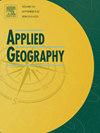Analyzing the effectiveness of China's national protected areas at resisting cropland expansion pressure
IF 4
2区 地球科学
Q1 GEOGRAPHY
引用次数: 0
Abstract
Protected areas (PAs) are increasingly acknowledged as crucial tools for preserving biodiversity. Recent studies have highlighted the challenges faced by global PAs due to cropland expansion, however, the effectiveness of China's national protected areas (NPAs) has received little attention. Therefore, utilizing high-resolution cropland data (30 m) and counterfactual matching methods, this research assessed NPAs performance at resisting cropland expansion pressure from 2000 to 2019 and explored the impact of this performance on the extinction risk of endangered species, as well as the factors associated with NPAs' effectiveness. Results showed that while NPAs have somewhat alleviated pressures from cropland expansion, they have not completely eliminated the issue. The cropland area within China's NPAs increased from 1.93 million hectares in 2000 to 2.34 million hectares in 2019, highlighting a concerning trend that poses a significant threat to species diversity. Furthermore, our analysis indicated total food output was the most significant factor correlating with cropland expansion within China's NPAs, surpassing GDP and population. These findings emphasize the need to address agricultural pressures within PAs to safeguard the long-term sustainability of biodiversity conservation efforts.

中国国家级保护区抵抗耕地扩张压力的有效性分析
保护区日益被认为是保护生物多样性的重要工具。近年来的研究强调了由于耕地扩张而导致的全球保护区面临的挑战,然而,中国国家保护区的有效性却很少受到关注。因此,本研究利用高分辨率耕地数据(30 m)和反事实匹配方法,评估了2000 - 2019年npa在抵御耕地扩张压力方面的表现,并探讨了这一表现对濒危物种灭绝风险的影响,以及npa有效性的相关因素。结果表明,虽然国家行动纲领在一定程度上减轻了农田扩张带来的压力,但并没有完全消除这一问题。中国国家保护区耕地面积从2000年的193万公顷增加到2019年的234万公顷,物种多样性受到严重威胁,这一趋势令人担忧。此外,我们的分析表明,在中国的国家保护区内,粮食总产量是与耕地扩张相关的最重要因素,超过了GDP和人口。这些发现强调需要解决保护区内的农业压力,以保障生物多样性保护工作的长期可持续性。
本文章由计算机程序翻译,如有差异,请以英文原文为准。
求助全文
约1分钟内获得全文
求助全文
来源期刊

Applied Geography
GEOGRAPHY-
CiteScore
8.00
自引率
2.00%
发文量
134
期刊介绍:
Applied Geography is a journal devoted to the publication of research which utilizes geographic approaches (human, physical, nature-society and GIScience) to resolve human problems that have a spatial dimension. These problems may be related to the assessment, management and allocation of the world physical and/or human resources. The underlying rationale of the journal is that only through a clear understanding of the relevant societal, physical, and coupled natural-humans systems can we resolve such problems. Papers are invited on any theme involving the application of geographical theory and methodology in the resolution of human problems.
 求助内容:
求助内容: 应助结果提醒方式:
应助结果提醒方式:


